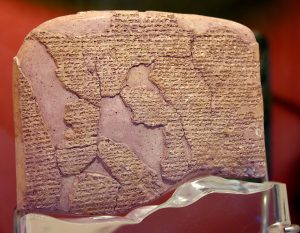Quick Guide 18: Archaeological Museums of Istanbul – Kadesh Peace Treaty Tablet
Table of Contents
Archaeological Museums of Istanbul – Kadesh Peace Treaty Tablet
Kadesh Peace Treaty Tablet: One of the most important artefacts in the museum is the tablet of the Kadesh Peace Treaty between the Hittites and the Egyptians.
Kadesh Peace Treaty Tablet
The Kadesh Peace Treaty Tablet, also known as the “Treaty of Kadesh” or the “Kadesh Treaty,” is an ancient artifact that contains one of the earliest known peace treaties in history. It dates back to the late 13th century BCE, during the reign of Pharaoh Ramesses II of Egypt and Hattusili III of the Hittite Empire. The treaty was signed around 1258 BCE, marking the end of hostilities between these two powerful ancient civilizations.
Here are some key points about the Kadesh Peace Treaty Tablet:
- Location of Discovery: The tablet was discovered in the ancient Hittite capital of Hattusa (modern-day Boghazkoy, Turkey) in the early 20th century during archaeological excavations.
- Contents: The treaty is written in Akkadian cuneiform script, which was a common language for diplomacy in the ancient Near East. It consists of several clay tablets, and the text of the treaty is inscribed on both sides of these tablets.
- Terms of the Treaty: The treaty is primarily a peace agreement that sought to establish and maintain peaceful relations between Egypt and the Hittite Empire. It includes provisions for mutual non-aggression, extradition of fugitives, and cooperation against common enemies.
- Importance: The Kadesh Peace Treaty is historically significant because it represents one of the earliest recorded instances of a formal peace treaty between two major powers in the ancient world. It is a testament to the diplomatic skills of both Pharaoh Ramesses II and Hattusili III, who sought to bring an end to the conflict.
- Symbolism: The treaty was not only a practical agreement but also had symbolic value. It was intended to demonstrate the willingness of both parties to resolve their differences through diplomacy rather than continued warfare.
- Kadesh Background: The treaty is named after the city of Kadesh (modern Tell Nebi Mend, Syria), which was the site of a famous battle between Egypt and the Hittites in 1274 BCE. The battle ended inconclusively, leading to a period of tension and ultimately the negotiation of the peace treaty.
- Preservation: The Kadesh Peace Treaty Tablet is preserved and displayed at the Istanbul Archaeological Museum in Turkey.
 This ancient treaty serves as a valuable historical document that sheds light on the diplomatic practices and international relations of the ancient Near East, particularly during the late Bronze Age. It remains an important artifact for historians and archaeologists studying this period in history.
This ancient treaty serves as a valuable historical document that sheds light on the diplomatic practices and international relations of the ancient Near East, particularly during the late Bronze Age. It remains an important artifact for historians and archaeologists studying this period in history.
For more about Serif Yenen and his tours, please visit www.serifyenen.com
